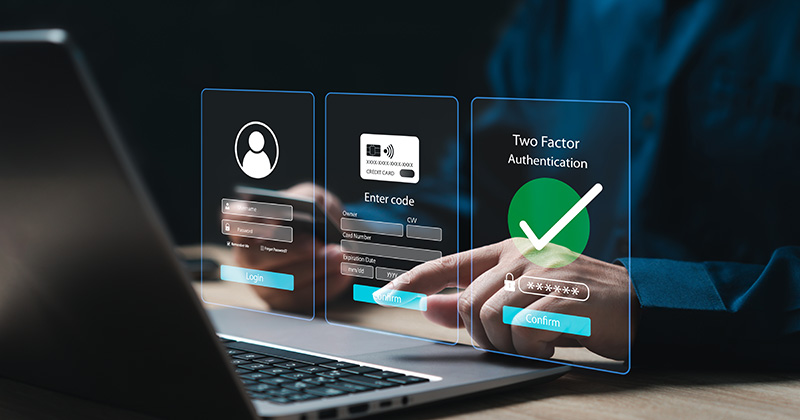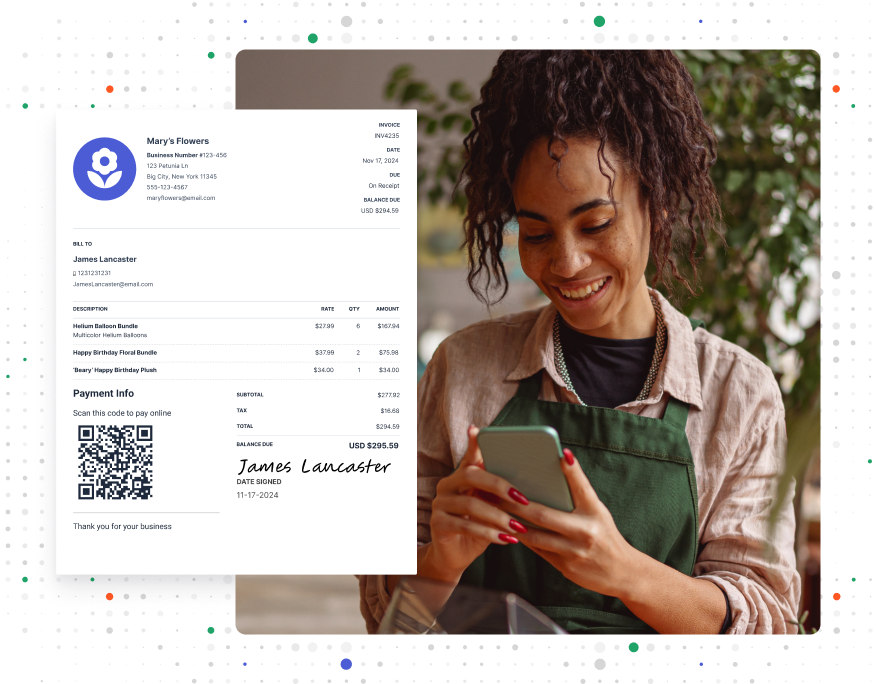What Is Payment Processing and How Does It Work?

Accepting multiple online payment options benefits both businesses and customers. However, a successful transaction requires many steps.
Payment processing is how customers can pay using credit cards or digital wallets online. It confirms that customers have enough funds available to make the purchase. It then transfers the money to the business receiving payment.
Understanding how this process works can improve cash flow, customer satisfaction, and fraud prevention. Here’s what you need to know.
What Is Payment Processing?
Payment processing is how businesses complete a financial transaction between a buyer and a seller. It includes authorizing, verifying, and settling payments through electronic systems.
Modern payment processing makes transactions quick and efficient. The system automatically manages communication between the bank, payment provider, and financial institution. This process usually happens within seconds.
Effective payment processing is essential for small businesses as it ensures a steady cash flow and allows quick payment collection. A reliable payment system helps reduce mistakes, lowers the risk of fraud, and improves the customer experience, supporting business growth and keeping customers happy.
How Does Payment Processing Work?

The payment process has several steps. These steps transfer money from the buyer to the seller’s account in seconds.
Here’s how it works:
1. Initiation
The process starts when a customer (buyer) decides to purchase something. They can tap, swipe, insert a card, or pay online. The process to complete the transaction is the same for all electronic payments.
2. Authentication
The payment gateway collects, encrypts, and transfers the buyer’s information. It sends the information to the processor for verification. The payment processor verifies the details. It checks the card number and security code to confirm that everything is correct and valid.
Then, the processor notifies the seller’s bank that the buyer wants to make a transaction. The seller’s bank sends the information to the card network for further steps.
3. Processing
The processing card network notifies the buyer’s bank of the inquiry and then transfers the verified information. Then, it verifies the customer’s account status, checks the balance, and approves or declines the transaction.
4. Authorization
The bank checks your account balance and personal information. It approves or rejects the transaction based on the funds available. The buyer’s bank returns an authorization code to the card network. The card network also passes the bank’s response to the payment processing system and gateway.
5. Settlement
If the transaction is approved, the buyer or customer receives the goods or service.
Why Payment Solutions Are Important for Your Small Business
Payment processing solutions are essential to small businesses for several reasons. First, they allow you to accept customer payments in different ways—in person, online, or over the phone. If you don’t accept the customer’s preferred method, they might not make a purchase. Accepting several methods could increase the odds that you make a sale.
Second, payment processing systems help keep your finances organized. You can track all transactions, view reports, and send money securely. The right system will reduce mistakes, lower the risk of fraud, and keep operations running smoothly.
Finally, an easy payment process makes customers feel secure. They know their information is secure and the transaction was efficient. This might make them more likely to return when they have a good experience.
Card Payment System Components

Payment processing involves several parts that work together to handle transactions. Here’s a simple breakdown of what makes up a card payment system:
- The Customer. The customer is the person or buyer who buys goods or services with a credit, debit card, or other payment method.
- The Merchant. Your business (the seller) accepts the buyer’s payments.
- The Payment Method. The buyer’s credit or debit card, mobile wallet, or other payment methods.
- The Point-of-Sale (POS) System. Stores process payments using an in-store terminal. In the case of websites, it’s an online checkout page.
- The Payment Gateway. The service sends transaction data from the POS system to the payment processor (card network).
- The Payment Processor. The processor manages the technical aspects of transaction processing, transferring funds from the buyer’s account to your business account.
- The Issuing Bank. The bank gives the customer their card.
- The Acquiring Bank. The seller’s bank. Your bank receives the funds from the buyer’s account once the buyer’s bank approves it.
- The Card Networks. Companies like Visa, MasterCard, and American Express help facilitate bank transactions.
RELATED ARTICLE — What Are Electronic Payments? Everything Your Business Needs to Know
Payment Processing Fees
Payment processors charge fees for their services. These fees vary by processor and payment method. They may also change depending on the number of transactions you make. Here are the most common types of fees you might see:
- Interchange Fees: The bank issuing the customer’s card charges the seller these fees, usually the most expensive part of card payment processing costs. The merchant pays the interchange fees.
- Assessment Fees: Card networks like Visa or MasterCard charge these fees to help cover the costs of running their payment systems.
- Transaction Fees: Some processors charge a fee for each transaction, big or small.
These fees are unavoidable, but picking the right payment processor can reduce costs. For example, some payment processors offer the option to cover online transaction fees by adding them to your customers’ invoices.
RELATED ARTICLE — Merchant Fees: Definition, How They Work, and Types
How to Choose a Payment Processor
Payment processors manage transactions in stores, online, and across different sales channels. They handle payments and offer services such as improving customer experience, preventing fraud, and ensuring compliance with regulations.
Here are some factors to consider when choosing one for your business.
1. Review Your Invoice Management Software’s Integrations
Many invoicing apps, like Invoice Simple, integrate with today’s top payment processors.
Enabling payments through your invoicing app streamlines your workflow. Rather than juggling multiple platforms, you can invoice and take payments from one place.
Plus, you can add payment QR codes or one-click links to your invoices. That way, customers can pay quickly and securely.
2. Pricing Model
Look for processors with transparent and fair pricing structures. Some charge a flat fee for each transaction, while others take a percentage of your sales. Compare different options to find the best deal for you.
3. POS System
Decide what kind of POS system you need. You can pick an in-store terminal, an online system, or both.
4. Location of Your Business
Not all payment processors offer cross-currency services. Pick a processor that supports multiple currencies and countries if your business operates internationally or has plans to expand.
5. Industry Risk
Some payment processors may refuse to work with certain businesses due to financial or legal risks. If you’re in a high-risk industry, check with the payment processor before signing up, as your options might be limited.
6. Contract Length
Study the contract terms. Some payment processors offer long-term contracts, while others work month-to-month. Pick the best option for your business.
4 Tips and Best Practices for Small Business Payment Processing

Follow these simple tips to make the most of your payment processing system:
- Create a Safe Payment Environment. Use encryption and tokenization tools to keep your customer’s information safe.
- Offer Different Payment Methods. Multiple payment options simplify the payment process. They attract more customers, increase sales, are convenient, and show the businesses’ commitment to customer satisfaction.
- Choose a Trusted Payment Processor. Choose a processor recognized for its security and strong customer support.
- Keep Software and Hardware Updated. Keep your payment system and software up-to-date to prevent security issues.
Payment Processing FAQs
How long does payment processing take?
Processing a credit card takes 1-3 business days. The verification is quick, happening almost right away. The longest part is transferring the funds from the credit card issuer (buyer) to the merchant (seller), which is why it can take a few days.
What are the most popular payment processors and PSPs?
The most popular payment processing services and Payment Service Providers (PSPs) include:
- PayPal. A widely used PSP offering easy online payments for businesses and consumers.
- Stripe. Known for its developer-friendly features, it handles online payments and subscription services.
- Square. Famous for in-person and online payments, especially for small businesses.
- Authorize.Net. A reliable payment processor for both online and in-store transactions.
- Adyen. This is a global PSP, supports various payment methods, including credit cards, mobile wallets, and bank transfers.
- Worldpay. Worldpay payment solutions cater to small and large businesses, with options for online and in-person payments.
- Braintree. A PayPal-owned company that focuses on mobile and web payments, supporting multiple currencies and payment methods.
- Shopify Payments. Integrated directly with Shopify, this processor helps e-commerce businesses manage payments.
- 2Checkout/Verifone. 2Checkout, now called Verifone, is A PSP that handles global payments and subscriptions for online businesses.
- Klarna. This PSP specializes in buy now, pay later (BNPL) services, allowing consumers to split payments.
These providers are popular due to their reliability, ease of integration, and broad support for payment methods.
What’s the best way to process payments?
There’s no one way to define the best way to process payments. Instead, we can focus on the results you would ideally like to see for your business.
Results like increased convenience, faster payments, and a simplified customer experience.
In those terms, processing payments through your invoicing app has the advantage. Some Invoice management software, like Invoice Simple, integrates with providers like Stripe and PayPal.
This integration increases your convenience by letting you send invoices and collect payments from a single platform. You can manage invoices, follow up on outstanding payments, and pull revenue reports without jumping between software.
Plus, it’s convenient for your customers. They can quickly pay invoices through the included payment links or by scanning QR codes on paper invoices.
They’ll also have the flexibility to pay using popular methods like credit, debit, ACH, Venmo, and more. Of course, review each processor’s offered payment methods. They vary per provider.
Other factors to consider are transaction fees and ease of use for each provider. Additionally, evaluate their security measures. It’s essential for customers to have a safe and easy experience.
Research different payment processors and pick the one that works best for you. With the right tools, you’ll be set up to run a successful and secure business.
FROM ONE OF OUR PARTNERS — 10 Things You Should Know About Opening a Merchant Account
Invoice Management Software | Web & Mobile | Invoice Simple
Offering clients a convenient and secure checkout process is easier than ever, thanks to Invoice Simple. Let customers pay you online with one click, directly from your invoices. You’ll get paid faster, and clients will enjoy a hassle-free payment experience.
Accept Payments OnlineStart Your First
Invoice Today
Create customized and professional
invoices and connect with clients








